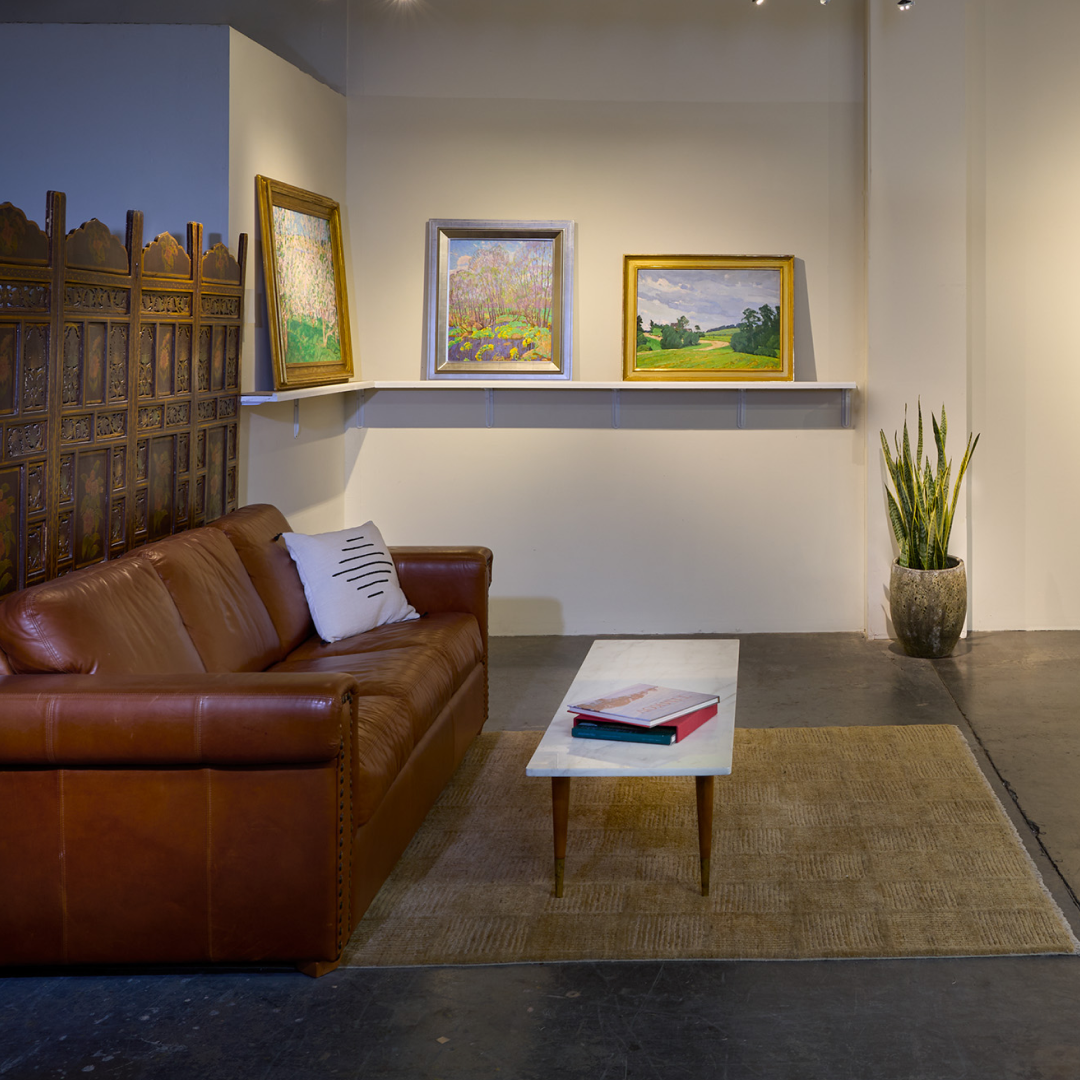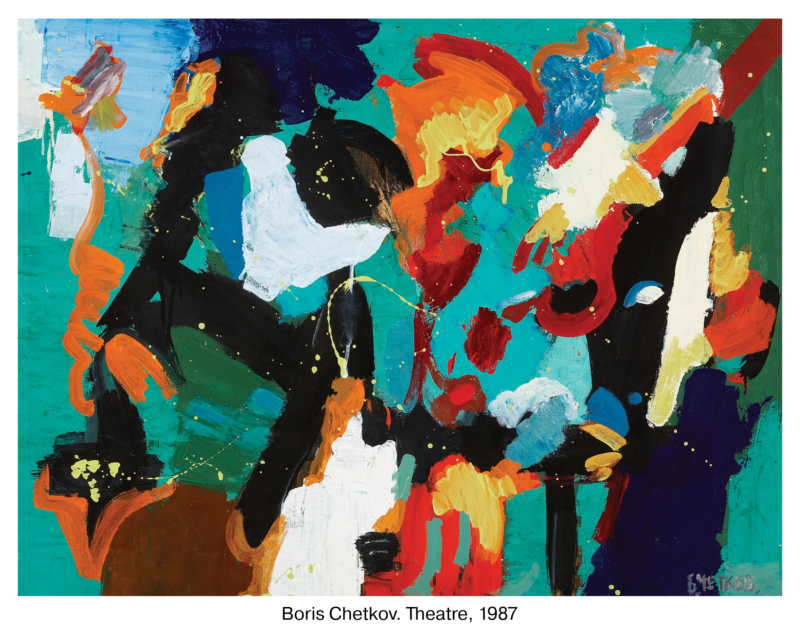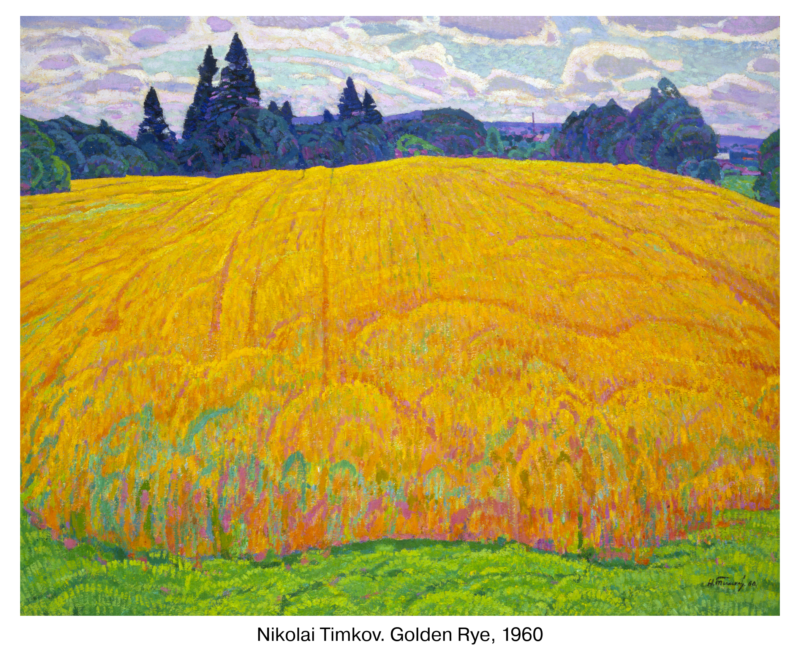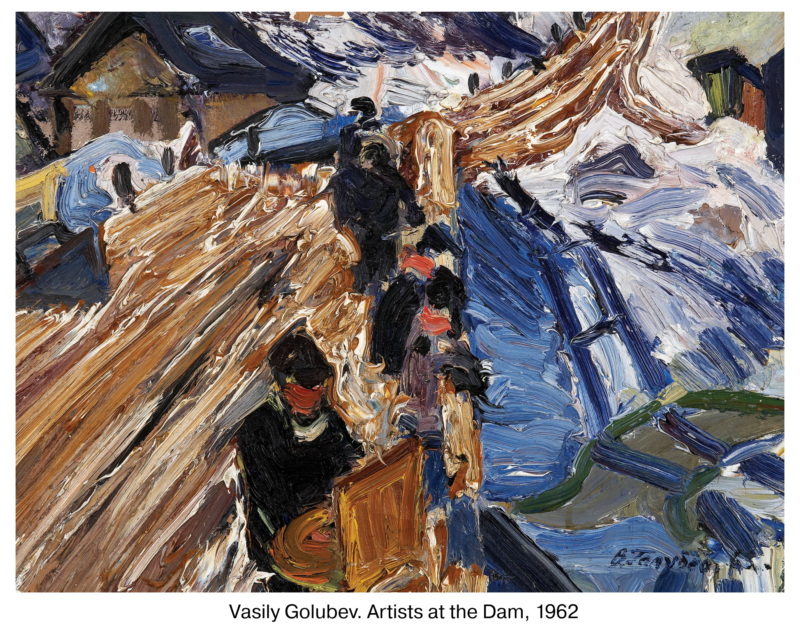
The Pushkin Collection, assembled by American art dealer Kenneth Pushkin, includes works from three outstanding unofficial Soviet-era artists: Boris Chetkov, Nikolai Timkov, and Vasily Golubev. Creating their own distinct art outside the state paradigm, they did not belong to any of the Non-Conformist groups either.
Kenneth Pushkin formed his collection in the 1990s and early 2000s when he was actively engaged in the newly opened Russian art world. In an interview with Fine Art Shippers, he talked about his experiences during that period, his friendship with Boris Chetkov, his encounters with distinguished cultural figures, and his personal emotional connection with the artists.
The Pushkin Collection
To begin with, I’m curious if you are related to the family of the celebrated Russian poet, Alexander Pushkin, or do you just share the same name?
Kenneth Pushkin: I’m not directly related; our connection is through a parallel family line. Our great-great-great-great-grandfathers were brothers 100 years before Pushkin was born, so I’m a distant relative. When I came to Russia in the early nineties and met Admiral Alexander Sergeevich Pushkin, the poet’s full namesake, he introduced me to the Pushkin descendants from Russia, as well as those from across Europe and they accepted me wholeheartedly. They would say that, with my curly hair and skinny figure, I looked like him. They called me “our little Pushkin.”
Could you tell us more about your relationship with Admiral Pushkin?
I developed a deep connection with the admiral who became both my patron and best friend while I was in Russia. A remarkable person and a man of great integrity, he passed away in 1997. He founded the first Pushkin Fund in Russia and was responsible for restoring the church in Moscow where Pushkin was married, among other notable contributions. It was he who introduced me to the Zamoskvorechye State Gallery, which stored thousands of Soviet-era paintings from both official artists and those working outside the concept of social realism. Back then, galleries and antique shops were virtually non-existent in Moscow, and this place was a real treasure trove for collectors and art dealers.
You took an active part in the work of the Pushkin Fund. What was your role there?
I helped raise funds for various causes through the Pushkin Fund by organizing high-profile events like the Stanford University Pushkin Conference, gala ballets and theatre performances, and the annual Pushkin Golden Autumn Ball at Catherine’s Palace in St. Petersburg. I worked closely with the Russian and US Ambassadors to arrange diplomatic Pushkin tribute events at their residences. Through these activities, I also established personal connections with leading museum directors — Irina Antonova, the director of The Pushkin State Museum of Fine Arts, Vladimir Gusev from the State Russian Museum, and many others.
How did you start forming your collection? What kind of Soviet art were you focused on?
Initially, I was purchasing individual pieces of social realism in Moscow, mostly because there was an abundance of artwork available. During the first few years, my approach was quite commercial. I sought what I called the “golden moments” of this period—works by academically trained painters who, when not depicting Stalin, created more intimate and personal works like landscapes or portraits of their children. These pieces were subtle and inherently beautiful, and I believed they would appeal to the American audience.
My instincts were right. From the mid-nineties to the early 2000s, there was a boom in interest in Russian culture in the US. After years behind the Iron Curtain, everything Russian was new and exciting.
What piqued your interest in the three artists that are now in your collection: Boris Chetkov, Nikolai Timkov, and Vasily Golubev?
When I visited St. Petersburg, I got involved with the cultural scene and met the director of the Pushkin National Museum at Moika 12. I don’t recall exactly how, but I ended up meeting Vladimir Gusev, the then-director of the State Russian Museum. We became friends, and he introduced me to his entire team, including the curator of the Department of Modern Art Alexander Borovsky. This connection led to further introductions, and soon I was meeting artists and becoming part of their circle.
I visited numerous studios, many belonging to deceased or very elderly artists. Not all were of the highest caliber in my view, but at some point, I found those three artists. They stood out to me because they were individualists, not belonging to any specific group or ideology. They were what I call “soloists.”
Apart from their individualism, what attracted you to their art on an emotional level?
My connection to these artists is rooted in my admiration for their dedication to expressing their voices, coupled with solid academic training.
I never met Nikolai Timkov. I came to Russia just a year after he passed away and visited his studio, which was on the top floor of an old Stalin-era building in St. Petersburg, crammed from floor to ceiling with his paintings. I was immediately struck by his impressionist style and the vivid colors.
Vasily Golubev, who I never knew either (he died in 1985) had a rather tragic life, which can be felt in the emotion of his expressionist works. He developed his style apart from the influence of Western trends, and I have a deep respect for that. He was persecuted by the Soviet regime, they burned his studio twice. Even his mother, thinking he was crazy, washed his canvases in the river so she could reuse them for more practical purposes.
I had the great pleasure of being friends with Boris Chetkov for almost ten years up until his death in 2010. We spent many hours in his small, cluttered studio, talking about his art and life philosophy. Chetkov was a unique and intense individual, with a look that resembled a mix of Charles Manson and Rasputin, yet he had a childlike spirit. He loved dressing up in whimsical costumes while working. A yogi who never drank or smoked, he considered himself a mystic. He was an action painter, directly engaging with the canvas, pouring his feelings into each piece through color and composition. While other artists of his time were more deliberate and calculated, Chetkov “attacked” the canvas, channeling his energy into each stroke. Not all his works were masterpieces, but when he was “on”, the results were stunning.
How many paintings by Chetkov, Timkov, and Golubev did you end up buying, and how big is your collection now?
Over the years, I bought nearly the entire body of work of these artists. Although many of their paintings had been dispersed or lost over time, I ended up collecting over 3000 pieces in total, with Chetkov’s works being the most numerous.
I’ve been very active with this collection, organizing exhibitions and selling these works at good prices through my Pushkin Gallery in Santa Fe, where I lived and worked for twenty years. The collection currently includes about 1,000 items, including my favorites, which I consider among the most significant.
Could you talk more about the Pushkin Gallery? How did it begin, and how has it developed over time?
I opened the Pushkin Gallery in 1999 on Canyon Road, a famous location in Santa Fe. Although Santa Fe is a small town of about 50,000 to 60,000 people—you may even call it a village—it is a vibrant cultural hub with many galleries. I was lucky to purchase a wonderful spot in a 250-year-old hacienda where a famous Santa Fe artist once lived and died. The place had a beautiful courtyard, and I lived in the back, using the front for the gallery and the basement for storage.
During my twenty years in Santa Fe, I was actively engaged in its cultural life, hosting numerous successful openings and even brought the debut of the Onegin ballet to the Santa Fe Opera. We also organized many ballet performances across the US, featuring the leading soloists of the Mariinsky. However, with the onset of the pandemic and shifts in the political landscape in Russia, I felt it was time for a change and decided to close the physical gallery.
What are your plans for the collection? How do you see its future?
Over the years, I’ve continued grooming and researching the works in this collection, publishing several books about the artists and their legacy. Today, I keep my followers engaged through a weekly newsletter that features different pieces by the artists. My audience includes not only my long-standing gallery clients but also an extensive list of international art contacts, including major gallery directors and academics. Currently, I’m exploring various opportunities to develop the potential of the collection. This could involve collaborating with a patron willing to support and enhance its academic value, an investor interested in its commercial potential, or both.
Interview by Inna Logunova
Photo courtesy of Kenneth Pushkin



